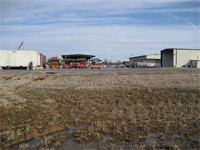CERCLIS ID FLD008161994 Listed 8 September 1983 Proposed 30 December 1982 | State Florida Responsibleparties EPA, COE | |
 | ||
Contaminants VOCs, PAHs, Pentachlorophenol, dioxin | ||
The American Creosote Works Superfund site is an inactive wood-treating facility in Pensacola, Florida located about a quarter-mile north of the confluence of Bayou Chico and Pensacola Bay. The Superfund program of the United States Environmental Protection Agency (EPA) protects the public and the environment by requiring cleanup of the nation’s worst hazardous waste sites.
Contents
History
The plant operated from 1902 until 1981, when the company filed for bankruptcy. Before 1950, creosote was the primary wood preservative chemical, and after 1950 pentachlorophenol (PCP) became the preferred chemical. Prior to 1970, operators discharged liquid process wastes into two onsite, unlined, percolation ponds which were allowed to overflow into Bayou Chico and Pensacola Bay. Later, workers drew wastewaters off the ponds periodically and discharged them into designated "spillage areas" on site. Additional discharges occurred when heavy rainfall flooded the ponds, which then overflowed their dikes.
Contamination concerns
The site is in a predominantly residential area, with commercial properties along the northern boundary. Though the area is served by municipal water supplies, numerous residents and businesses operate private irrigation wells. Major contaminants in the soil, sediment, and groundwater are volatile organic compounds (VOCs), polycyclic aromatic hydrocarbons (PAHs), PCP, and dioxins and dioxin-like compounds from the former wood-treating processes.
